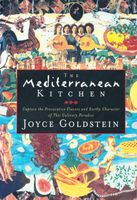Advertisement
Preparation info
- Difficulty
Medium
Appears in
Published 1998
In Italy pasta is a primo or first course. The average Italian wants his pasta daily but in appetizer-sized portions. However we think of pasta as a main course, so we eat a larger portion (but not every day). My servings for these recipes are entrée portions. In my experience, one large egg and one cup flour makes two reasonable entree-sized portions of pasta or three to four appetizer-sized portions.
Whether you make the pasta by purist or expedient technique is up to you.


